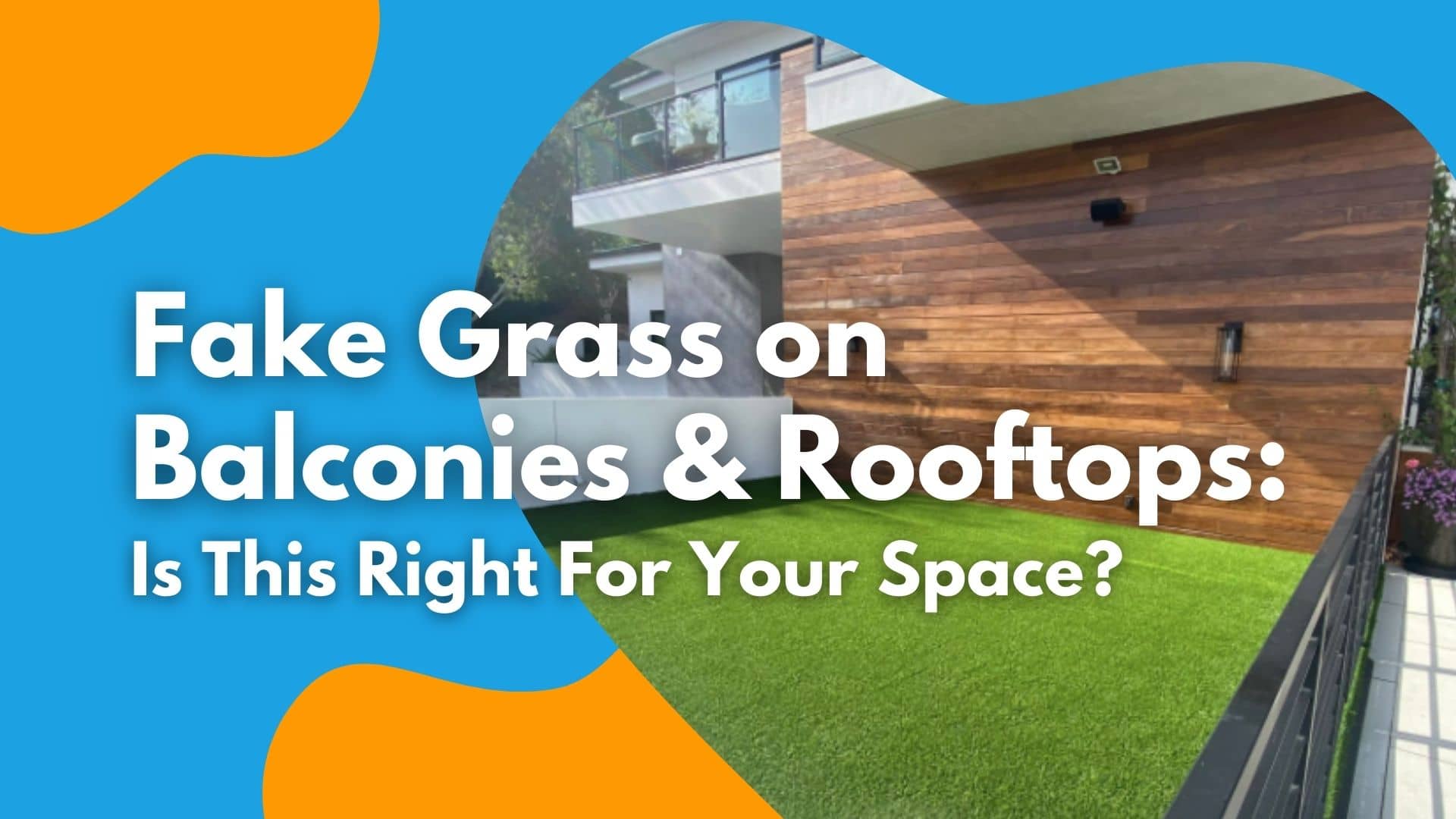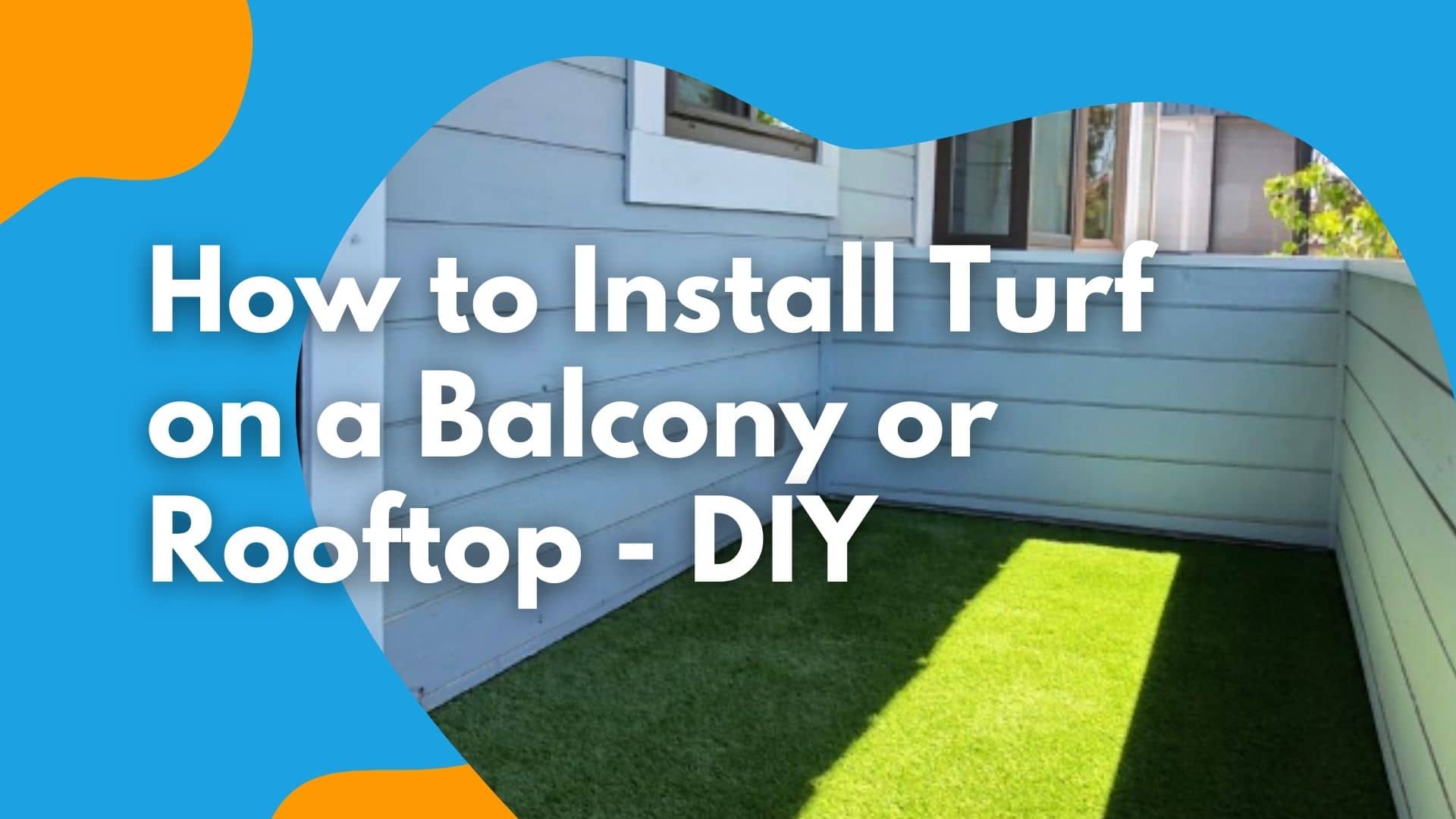
Artificial grass on balconies and rooftops is a trendy way to amplify your space and has become more and more common among homeowners because it provides a cozy...
Looking to add some greenery to an otherwise drab space? Artificial grass is an excellent addition to balconies, patios, and rooftops to give you a bare-foot-friendly space. Here's a guide on how to DIY turf installation at home on hard surfaces!

While this seems like a given, there's more that you need to look out for than meets the eye. We'd recommend looking into the following things BEFORE purchasing your turf materials.
There is a substantial difference between installing artificial turf in enclosed areas as opposed to open areas. When you have an open balcony or rooftop, the installation process becomes much more difficult. In this case, you have to make sure that you prevent the artificial turf from uplifting by either applying weight to the surface with sand infill or attaching it to the balcony with professional adhesive.
Fortunately, most balconies and rooftops are designed and constructed with water drainage in mind. We do not recommend installing artificial turf in any area that has an issue with water pooling. You don't want your artificial grass retaining water. If water builds up, mold and mildew can potentially occur. Before installation, you must confirm that there is somewhere for rainwater and other liquids to go. For this reason, manufacturers recommend always installing a drainage layer beneath turf on balconies and rooftops, however, most homeowners will skip this step.
Magnification is a commonly known issue with Artificial Grass. Like anything laying in direct sunlight, artificial grass can become warm on high-temperature days. Magnification occurs when sunlight is reflected off a window onto your turf. This can lead to synthetic materials melting in the sun. See if you spot any white reflection lines on your surface, if so look further into magnification before moving forward.
Most balconies have sliding doors that don't open outward, but this is not always the case. Doors that open out onto the balcony or rooftop can have issues going over the artificial grass. If the door can't easily open and close after your turf installation this can quickly become a safety hazard. In this situation, you can either trim the grass to allow the door to open, or opt for shorter grass. You'll need at least 1-2 in. between the door and the ground to be able to install turf.
Use a sharp utility knife to cut the artificial grass to size. We'd recommend unrolling and cutting your turf to size before carrying it through your home for ease. Artificial turf is fairly heavy, so make sure you have a few people to assist. Remember to double-check your measurements multiple times before cutting!
We always recommend opting for a drainage membrane when installing turf over hard surfaces. Especially in areas that are larger than 100 sq. ft. This will help make sure that no water or moisture becomes trapped beneath the surface. With stagnant water comes mold and bacteria. Two popular drainage grids for artificial grass are Drain Core and AirDrain.
If you have more than one piece of grass, you'll have to seam the two pieces together. Do your research when it comes to the glue you use. You want to use glue that doesn't expand and still secures the seams. Be very careful when applying the glue. If applied incorrectly glue can damage your floors. Also, make sure you are not violating any HOA rules when applying your adhesive.
For the least visible seams, try cutting the grass in a zipper or s shape to create an illusion. Connecting two pieces together that were cut in a straight line will almost always result in a visible line in the surface.
If you'd like, you can glue the turf on the transition to ensure the corners don't begin to come up and wrinkles don't occur. Keep in mind this may leave damage and stains on the surface upon removal. You can also apply sand infill on top of the turf to weigh it down and keep it cool. The only downfall to this method is that it eliminates the ability to vacuum the turf to clean it.
*If your space is not enclosed, we'd always recommend securing the grass with one of these methods.*

Want your balcony or rooftop to look cozy just like this? DIY today! We're here to help you purchase the best artificial grass available for your space, and now you know exactly how to install it yourself. Whenever you're ready, get started by browsing our online turf store and requesting a deal below!

Artificial grass on balconies and rooftops is a trendy way to amplify your space and has become more and more common among homeowners because it provides a cozy...

While putting artificial turf on a rooftop deck is a creative long-lasting way to enhance your space, it can come with costly repairs if not designed and installed...